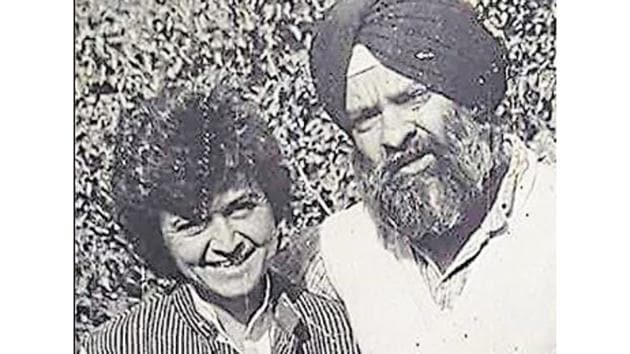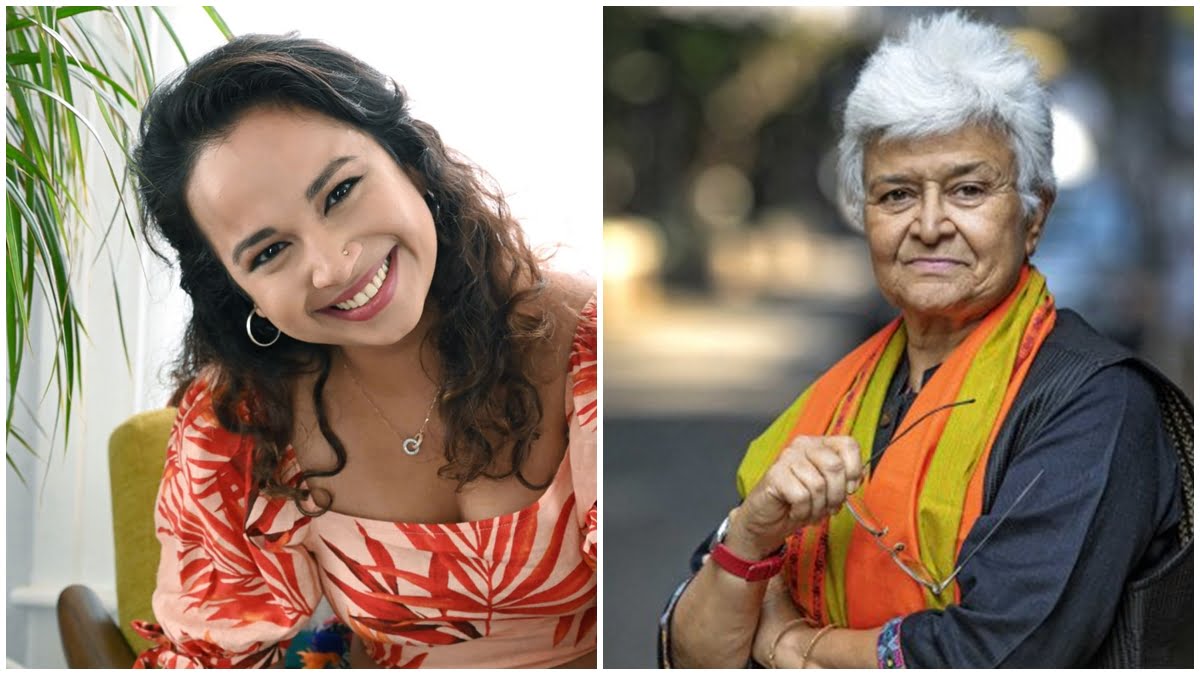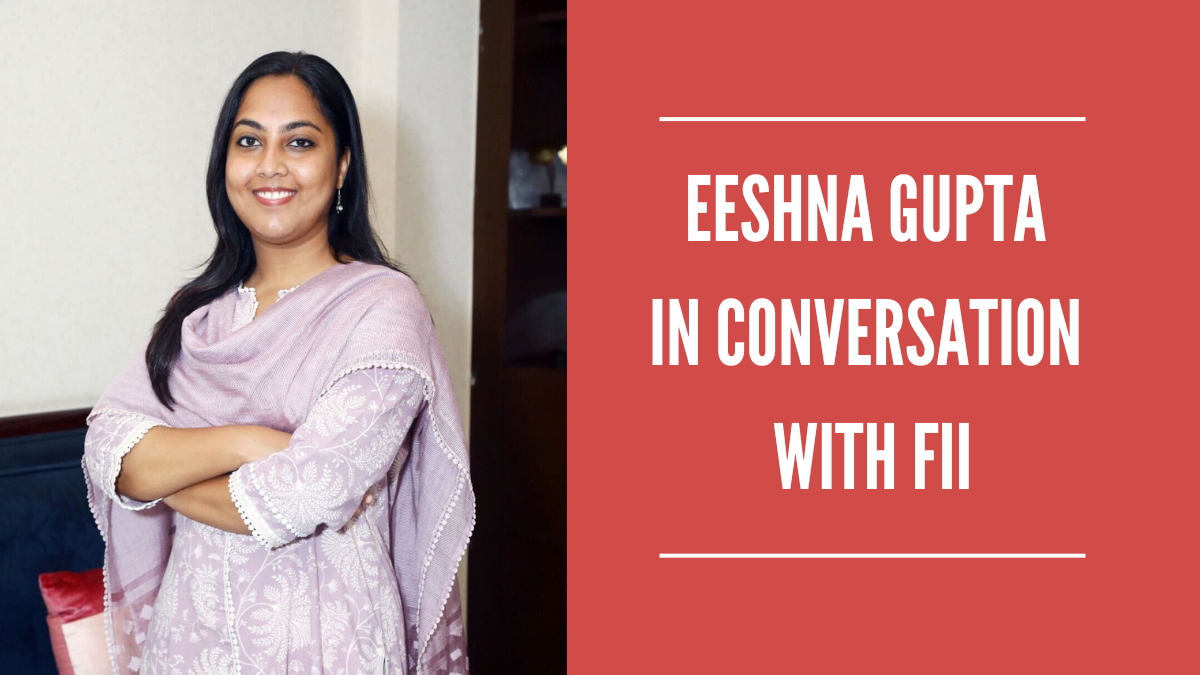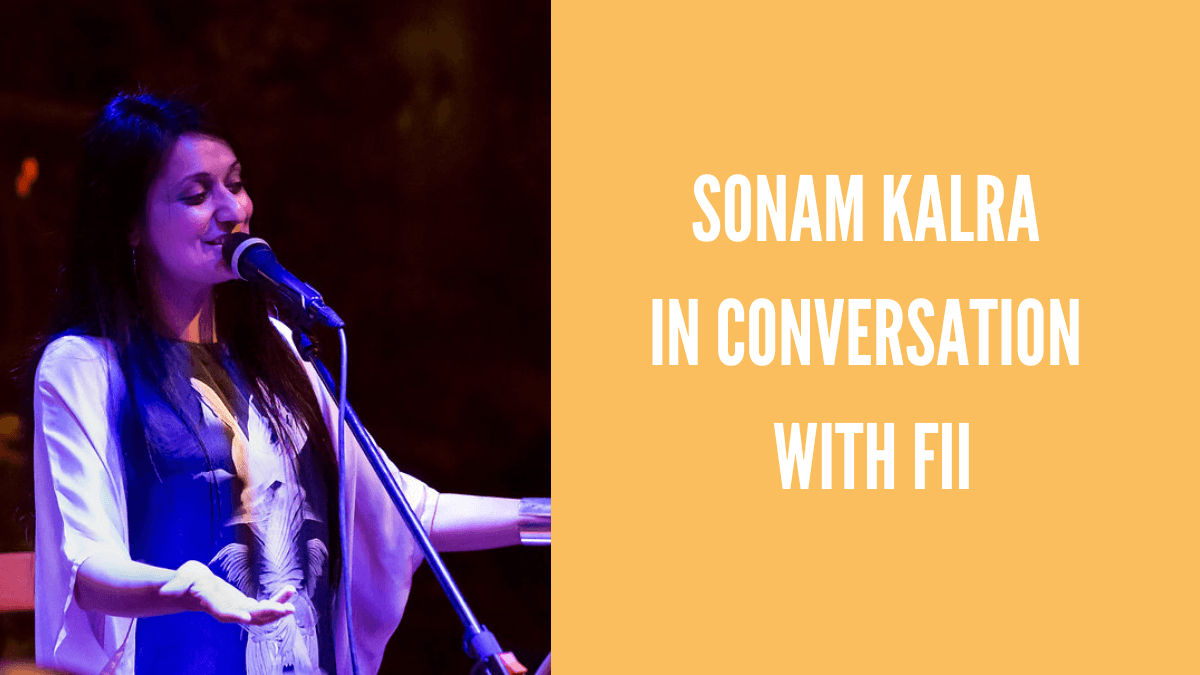Kajri Akhtar, based out of Los Angeles, is a South Asian filmmaker, producer and the founder of ‘Icchi the Cat’ Studios. Influenced by the ideals and approaches to issues around gender, development and democracy of the feminist activist and thinker Kamla Bhasin, who passed away on 25 September 2021, Akhtar created a documentary in 2012 on the former’s life. Titled ‘Kamla Bhasin — A Woman, By Choice’, the 18-minute documentary is available to watch on YouTube.
The documentary attempts to delve deep into the life of Bhasin, touching upon both personal and professional aspirations, stories of courage and her inspirations. Another fascinating connection Akhtar has with Bhasin is in how the former’s mother, Tarkeshwari Negi (now a professor at the University of Delhi) worked closely with the latter in the 1980s feminist movement. Akhtar, therefore, grew up reading and being influenced by the stories and poems that Bhasin wrote.
Also read: A Tribute To Feminist Activist Kamla Bhasin
Here are a few excerpts from the email interview which Akhtar gave to Ankita Apurva for FII.
1. You have spent a considerable part of your formative years in Delhi, at the focal point of the feminist movements in India. What impact did Kamla Bhasin’s literary and social work have on your nascent years?
I grew up reading Kamla’s books, out of which Ulti Sulti Meeto was my favourite. Meeto was the protagonist of the story and she was found doing silly things like running around with her underwear on her head, the opposite of what was expected of young girls. Kamla created a space for girls to exist outside of the gender norms that dictate our lives. And I found comfort knowing it was okay for me to be myself. Additionally, the way Kamla addressed housework in her book for children ‘ghar ka kaam hai sab ka kaam’ was a revolutionary idea back then. Housework was presented as a shared activity for male and female members of a family. For an impressionable child, these messages went on to help me recognize what equality could mean.
“I grew up reading Kamla’s books, out of which Ulti Sulti Meeto was my favourite. Meeto was the protagonist of the story and she was found doing silly things like running around with her underwear on her head, the opposite of what was expected of young girls. Kamla created a space for girls to exist outside of the gender norms that dictate our lives. And I found comfort knowing it was okay for me to be myself.”
The early influences from my mother, Kamla and many other feminists and free-thinking women at the heart of India’s feminist movement in Delhi resulted in me studying the arts and going on to study Sociology at Lady Shri Ram College. Today, as a filmmaker I work towards bringing to the table a unique perspective to tell stories of women through a contemporary feminist lens. The early influences in my life pushed me to be independent, self-aware, and always question patriarchy.
2. You grew up surrounded by vocal women who challenged the patriarchy in different ways, be it your mother or Kamla Bhasin, or the other women from the feminist movements. This is an opportunity and privilege that most women in India do not have, for most women in our generation are first-generation feminists from their families. How different did you realize your upbringing was as compared to your counterparts?
Growing up I saw my mother negotiating her freedom and using her understanding of feminism to navigate life as a young professor and choosing to marry a Muslim man. As I grew older, I started to grasp what intersectionality meant. I realised that I didn’t have the same familial background as a lot of my peers which meant that the playing field was never equal. Having been brought up by a single mother kept me grounded, and pushed me to work relentlessly towards my goals. Growing up, I saw my privilege but my intersectionality enabled me to navigate relationships and better understand people which, today, translates into my filmmaking and has nudged me towards choosing unique subjects to work with.
When I went on board as a producer for a film for Urban Company, I decided to focus on the women workforce and to honour women on International Women’s Day. The film captured the different journeys of four women from various age groups, how they found their voice through their work and how they reclaimed their freedom.
3. What is it about Kamla Bhasin that struck you the most?
I remember setting up the cameras and waiting for Kamla’s arrival at a gender training session in Delhi. The room was quiet, maybe even dull and gloomy. As a camera crew, we were trying to blend in as much as we could and didn’t want to disturb the natural flow of people and their space. When Kamla Bhasin walked in, the energy was suddenly uplifted. Everyone seemed invigorated and began interacting with one another.
Her ability to transcend differences, and effortlessly connect with everyone was the most striking quality of hers. She could connect with anybody, rich or poor, English speaker or not, and across classes. That was her strength. Having said that, I was drawn to Kamla even before I met her. Her magnetism reached out to me through her books and my mother’s experiences with her during the feminist movement.
4. While mainstream media tends to depict Kamla Bhasin only with respect to her work, or through the woman that she was on stage or on the ground, your documentary has explored her personality through a myriad of domains. Was this a conscious attempt to engage with her all-encompassing personality beyond headlines, or do you believe that as women we naturally tend to look and interact with each other as more complete beings?
I consciously decided to engage with Kamla Bhasin beyond her politics. Reading her books, and being in close proximity with her made me realize that she was not an ordinary feminist. During the making of the film, it was reaffirmed that she had the passion and a strong intention to change the status of women in whatever way she could.
I was aware that she had a challenging personal life and wanted to know more. During the research phase, I came across old video recordings of her and her daughter, Meeto, and decided to include the footage in the film. Beyond that, I was surprised to learn that there weren’t any material/film documentaries that would give me a peek into her personal journey. This egged me on – as a woman film producer – to create a film on this dynamic personality that went beyond her work.
5. In most cases, people elaborate on Kamla Bhasin in terms of her achievements and victories. Your documentary has made extensive endeavours to also reflect on the multitudinous challenges that she has faced all through, and the people who have supported her through it all. Do you believe that in order to humanize the victories of a public figure; one also needs to comprehend the background they come from and the trials they are made to go through?
Most definitely; everyone has their unique challenges which have immense value and impact on their lives. And in order to understand a person it is important to understand the context, comprehend their backgrounds, and see the whole picture. Kamla was open and vulnerable during the filmmaking process; she opened up about her husband’s mental health, her struggle with her daughter’s mental health and suicide at an extremely young age. Her candour allowed me to take a deep dive into her past and dissect her personal biography. If a documentary filmmaker has a willing/comfortable subject, it becomes so easier to tell a well-rounded story.

The fact that Kamla could share her difficult experiences was integral to my craft. Through the film, I wanted audiences to connect with her on a deeper, more personal level and feel the empathy I felt for her. As a researcher, I was trained to always check myself and during the filmmaking process, I found that I had to exercise that check on the edit table. I was trying hard to not make Kamla look like what she was to me. But as there isn’t a thing as an unbiased researcher, I now realize that it wouldn’t be possible.
Also read: In Conversation With Kamla Bhasin: Renowned Developmental Feminist Activist
6. Throughout history, men have been documented extensively and the struggles and contributions of women have been willfully sidelined, which means that a major chunk of the past is not present with us today. Do you feel that more documentaries on women need to be made, not only as archives but also as reminders?
Yes, absolutely. This documentary was my attempt to change that. Kamla’s untimely death has reminded me that we all don’t have a lot of time to document the generation (of women) which soon won’t be around anymore.
Through my film production studio – ‘Icchi the Cat’, I try to work on stories of women not only from Kamla’s generation but from mine as well. For example, the film that I made for Satyamev Jayate explores human scavenging and untouchability. It was a short film honouring the journey of a woman who overcame extreme discrimination and poverty. She went from cleaning toilets to buying an auto-rickshaw and becoming financially independent.
We need more films to focus on meaningful storytelling and on women leaders who positively impact the lives of future generations. We also need more women behind the lens; I try to employ women crew and artists for projects that I get behind. I think every filmmaker owes it to themselves to evaluate their choices; through this self-reflection I am able to consistently work on women’s stories.
7. In your conversations with Kamla in the documentary, she is at complete ease. Furthermore, the documentary also has pictures from her personal life, and all of this in a way also reflects your equation with her. Could you tell us more about your equation with Kamla?
My introduction to Kamla goes way back when I was a toddler but we became close only through the filmmaking process. And when I interviewed her, the space we shared felt safe to both of us. I also knew her daughter Meeto and I think this made me more relatable to Kamla, as we had a shared memory of her daughter. Through my work, I learnt that sometimes the documentary process can get clinical, so being oneself and a friend rather than a researcher makes a difference. It is difficult to do but that’s why our empathy towards one another resonated in this film.

8. How long did it take to complete the documentary and how would you describe the experience?
It took a few months to create the documentary but the idea of it had been with me ever since I decided to make films. She was an important figure in my mothers’ life and mine, and I always wanted to capture her life on screen. She was camera-friendly, which made her extremely proficient. Interestingly, when we entered her house on our first day of the shoot there was already a news crew present in her living room and that became my introduction of Kamla in the film, which was extremely meaningful in setting the stage for the story.
She welcomed us with open arms and her entire household was warm towards us. The film also gave us a glimpse into her upper-class and caste privileges as an educated and financially well-off woman. At the end of the day, people face their own unique challenges with birth, ageing, sickness and death but it’s their contributions towards a society that matters eventually.
9. As it is with any individual who has engaged in social and public activities, there are conflicts and difficult conversations, over the years. Is there anything you would want to change or add or ask her if you had the chance to make this documentary again?
If I had to make this film today, I would have addressed intersectionality. Kamla was always evolving with the times and was unstoppable in her expansion of the self. She never defined any struggle to be less or more, she taught us that no matter what the struggle the commitment to one’s belief mattered. I would have definitely asked her what feminism meant to her today and her commentary on how the LGBTQIA movement is shaping globally. In the near future, I hope to make a full-length documentary on her – including the criticism Kamla received and how that shaped the feminist dialogue. I think that film could touch upon a very important conversation that our generation of feminists would like to have about Kamla’s feminism.
10. In the documentary, Kamla Bhasin has mentioned how among the oppressed communities, women have it the worst. Over the years, there have been instances where her opinions on intersectionality have been criticized. Do you, on a personal level, agree with all of her opinions, or do you disagree at some points?
I don’t think one can agree with everyone’s opinion. I didn’t find Kamla to be a stagnant feminist, she was way ahead of her time. She also used her privilege positively towards the feminist movement by bridging the gap and forming networks in South Asia. The body of work she created, the number of men and women she empowered go to show that she was committed to the cause and gave her entire life to the movement. We have to take into account that she came from a different era and a very different social and political environment. A lot of people can criticize her and as times change – that happens with every school of thought – but dismissing her contribution and disregarding the cause she championed would be a disservice to feminism.
“I didn’t find Kamla to be a stagnant feminist, she was way ahead of her time. She also used her privilege positively towards the feminist movement by bridging the gap and forming networks in South Asia. The body of work she created, the number of men and women she empowered go to show that she was committed to the cause and gave her entire life to the movement. We have to take into account that she came from a different era and a very different social and political environment. A lot of people can criticize her and as times change – that happens with every school of thought – but dismissing her contribution and disregarding the cause she championed would be a disservice to feminism.”
For me, the experience was eye-opening, and I learnt a lot more about the feminist movement and why it is so important to keep on with the struggle and throw light on the importance of equality. It’s so important for storytellers to find their Kamlas and tell stories of women who are doing exceptional work behind the scenes – many of whom go unnoticed.
Featured image source: Shortpedia
About the author(s)
Ankita Apurva was born with a pen and a sickle.





